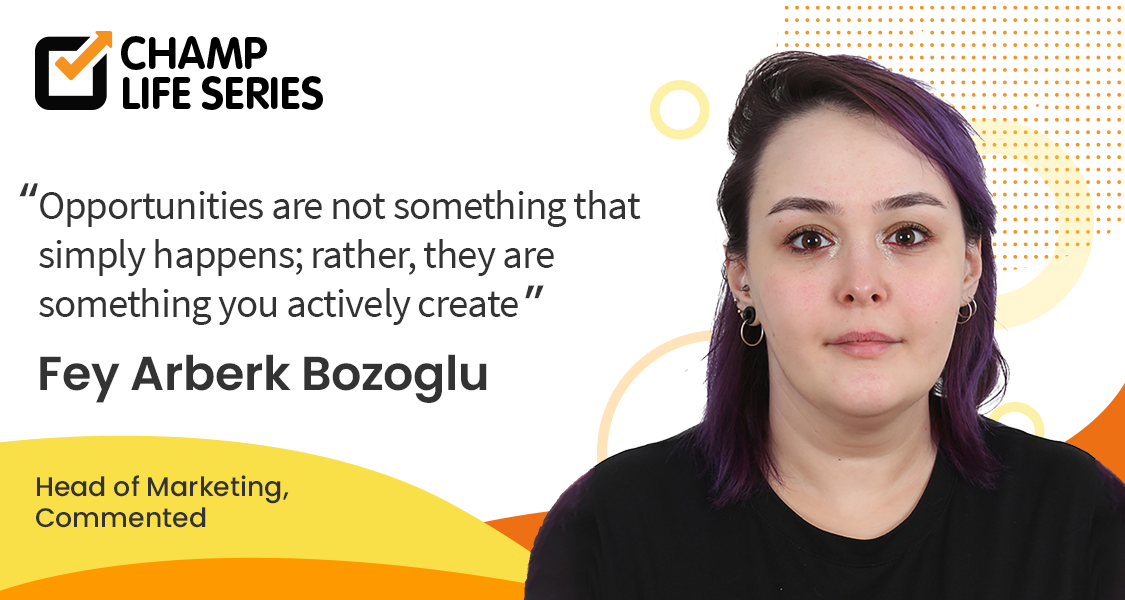Are you tired of playing SEO and social media marketing as separate games?
It’s time to change that.
The lines between these two digital marketing powerhouses are blurring, and mastering their synergy is essential for online success.
In this blog, we’ve compiled the ultimate guide to optimizing your content for search engines and social media. We’ve interviewed experts who have distilled their years of experience into actionable tips and strategies that will help you boost your visibility, engagement, and conversions.
Let’s start!
Jen Seran
Director of Business Operations at Stallion Express
SEO is important if you want people to be able to find your social media content. Making your accounts and posts more search-engine friendly gives them a better chance of appearing in search results on Google and other search engines. This could bring in more free traffic and get people more involved.
Here are some best practices for making social media material more SEO-friendly:
- Use Keywords Strategically: Use important keywords in your social media profiles, posts, and hashtags. Search engines can find your information better if you do this. We use terms like “eCommerce shipping” and “cross-border services” at Stallion Express to reach the right people.
- Optimize Your Profiles: Make sure your social media profiles are full and have relevant keywords. This includes your bio, “about,” personal picture, and cover picture. If you improve your page, it’s more likely to come up in searches.
- Engaging Content: Make good material that people will want to share. People who are interested in your posts will share them, which will help your SEO by growing their reach and the chance of getting backlinks. For instance, our informative posts about shipping tips get a lot of shares, making us more visible.
- Link to Your Website: In your social media posts, link back to your website whenever you can. This can help your search engine ranking and bring more people to your site.
- Use Alt Text for Images: Use Alt Text for pictures on Twitter and Instagram. This not only makes your work easier for people to find, but it also gives you another chance to use keywords.
——————–

Jake Ward
Founder of Kleo
I live and breathe the intersection of SEO and social media every day. Drawing from my experience building successful online businesses and my expertise in content marketing strategies, I’m excited to share insights on elevating social media visibility through smart SEO practices.
In our modern digital age, social media has become an indispensable channel for brands, influencers and businesses of all sizes to connect with their audiences. However, the sheer volume of content being shared daily means visibility is more competitive than ever before. This is where SEO comes into play – by properly optimizing social posts for search engine discoverability, you can unlock exponentially higher engagement and reach versus relying solely on your existing follower base.
One key tactic I’ve found incredibly effective is using keyword-rich hashtags relevant to your target audience’s searches. At Kleo, we’ve built functionality allowing users to analyze trending hashtags and identify content topics primed for high engagement. By natively incorporating these into your posts and profile bios, you increase the likelihood of appearing in users’ hashtag feeds and search results when they browse related topics.
Beyond hashtags, there are myriad other opportunities to give your social media content an SEO boost. For example, ensuring visual elements like videos and images are properly tagged and titled using high-value keywords. Or strategically linking your website and other web properties to your social accounts through external links. These types of optimizations not only make your social real estate more discoverable but also contribute to an overall stronger domain authority over time.
One noteworthy example highlighting the power of combining SEO and social comes from our “SEO Heist” experiment last year. By carefully mapping out a content strategy mixing on-page website optimizations with coordinated promotion across LinkedIn, Twitter and other channels, we managed to propel an entirely new website to Google’s first page for a highly competitive term like “SEO agency” in under 60 days. And the synergies between the SEO elements and amplification via social proved instrumental to rapidly building authority and visibility from scratch.
——————–

Chase Chappell
Founder of Chappell Digital & Sirge
As an experienced digital marketer, I’ve seen how social media and SEO can drive real results together. By using search-optimized hashtags, keywords, and mentions in social posts, my company boosts both search rankings and social engagement.
For example, one client increased website traffic by over 50% in 6 months through an integrated social and SEO strategy focused on optimizing posts for search. We also respond to every comment and tag, showing search engines the content is engaging and relevant. More likes and shares translate to higher rankings and impressions.
SEO fuels social sharing, and sharing boosts rankings. The key is creating content worth discussing and optimizing it for search and social. Focus on experiences, not products, and the benefits compound. We saw a 20% increase in organic search traffic, which led to a 15% increase in social shares last quarter. Optimize for search and social, and both will thrive.
——————–

Lisa Richards
CEO and Creator of the Candida Diet
Strategic SEO enhances organic discoverability of our social media content; correct placements of keywords and optimizing our social media profiles make it more likely for people to find our content in organic searches – say, when they are trying to locate information on candida overgrowth or an anti-candida diet. In this way, if someone is searching for ‘candida recipes’, and our optimized social media feeds containing suggested (and tasty!) recipes show up on the first page of a search results, that’s a win-win.
We connect with someone at their point of need, and our social media content is reinforced as a resource. The second way that SEO impacts our business is that our organic content has room to travel beyond our current audience. When our social media content ranks well, it’s more likely to be discovered by a much wider audience who may have not been exposed to candida information. This organic content discovery creates a broader reach, brings in new faces that we can assist with our custom plans, and is what grows the community that we serve.
——————–

Hansjan Kamerling
Product designer at Adaptify AI
As an SEO consultant, I’ve seen how optimizing social media for search rankings translates into real business impact. Last year, I worked with a startup that increased website traffic by over 50% in 9 months by focusing their social strategy on search keywords. We started by researching their target audience’s interests and questions on platforms like Reddit and Quora. Then, we incorporated relevant keywords and phrases into social posts to tap into existing search demand. For example, a post on their new product included keywords like “project management tool” and ” collaboration software.”
Engagement is also key. Responding to every comment and mention signals to search engines that a brand’s content is valued. Likes, comments and shares increase search rankings, bringing more traffic. So we crafted social posts to spark discussion, not just promote products. The results compound. More search traffic increases social shares, and more social shares improve search rankings. An SEO-optimized social strategy is a virtuous cycle that pays off in business growth.
——————–

James Dooley
Entrepreneur at PromoSEO
SEO and social media go hand in hand when it comes to reaching the right audience. By optimizing content for both search engines and social platforms, businesses can maximize their discoverability and engagement. SEO is about understanding customers and crafting content tailored to meet their needs. The same philosophy applies to social media.
Researching popular keywords within your industry ensures posts are seen by those most likely to find them relevant. I always aim to provide value to readers through high-quality, fact-based discussions rather than hastily created content.
Being consistent across profiles, images, and messaging helps establish authority while linking builds connections between platforms. Hashtags should highlight primary topics but don’t use too many. Timing posts for peak audience hours proves crucial. It’s also important to respond to comments as soon as possible.
Platforms each offer their own optimization best practices. On Facebook, using native tools and sharing to groups widens reach. Instagram emphasizes visual storytelling so high-resolution photos perform well there. Twitter rewards short posts and trending topics. LinkedIn focuses on industry conversations and YouTube on descriptive metadata.
Analyzing metrics gives valuable clues about engagement drivers on every network. I’m always testing headlines, formats and topics to see what resonates most with followers. A multichannel approach combining SEO principles with strategies tailored for every social site has generated the best results for my clients and myself over time.
The shared goal across all digital marketing is helping potential customers find you. SEO and social media complement each other powerfully when implemented thoughtfully and with the user experience in mind. Focusing first on creating interactions of value is what really boosts discovery and builds loyal connections no matter the distribution channel.
——————–

Nick Drewe
Founder & CEO of Wethrift
Firstly, SEO and social media are inherently linked, with each influencing the other’s performance. A thoughtfully optimized social media post can boost its visibility, driving traffic to your website and boosting overall SEO rankings. Second, it’s essential to leverage keywords in your social posts.
Just as in website SEO, keywords play a vital role in getting found by the right audience on social media. Using hashtags strategically can work wonders in maximizing the reach of your content. Third, consistency in posting is crucial for gaining recognition by search algorithms, both on social platforms and search engines.
Regular, engaging content gets rewarded with greater visibility. Lastly, it’s the quality of content that matters the most. While optimization is critical, it’s the value that your content offers to the audience that sparks engagement and shares, contributing directly to your SEO success.
——————–

Viktoria Medvedko
Founder and link-building strategist at Get mentioned today
SEO plays a crucial role in enhancing the visibility of social media content. When content is optimized with relevant keywords, it becomes more discoverable both within social media platforms and through search engines. This dual visibility can significantly extend the reach of your posts. For instance, when I optimize our agency’s social media updates with specific keywords related to link building, we notice an uptick in engagement and follower growth.
One of the best practices for optimizing content on social media from an SEO perspective is to conduct thorough keyword research. Identify the terms your target audience is searching for and naturally incorporate them into your posts, descriptions, and hashtags. Tools like Google Keyword Planner or Ahrefs can be invaluable here.
Additionally, using clear and compelling headlines can capture attention and improve click-through rates. Another effective strategy is to ensure your social media profiles are fully optimized. This includes filling out all sections of your profiles with relevant information and incorporating keywords in your bio and descriptions. A well-optimized profile can drive traffic not only to your social media pages but also to your website, enhancing your overall online presence.
Consistency is also key. Regularly posting high-quality, keyword-optimized content keeps your audience engaged and signals to search engines that your profile is active and relevant. Moreover, engaging with your audience through comments and shares can boost your content’s visibility in social media algorithms.
In summary, integrating SEO into your social media strategy can significantly improve the visibility and reach of your content. By focusing on keyword research, profile optimization, and consistent, engaging posts, you can enhance your social media presence and drive more traffic to your platforms.
——————–

Nikola Baldikov
Founder of InBound Blogging
The goal of social media SEO is to improve your discoverability within the platforms themselves. It heavily depends on your keyword optimization, but there’s also the trending factor that you should always try to take advantage of.
The more optimized and engaging a post is, the higher the chance of it reaching more users. This can create a domino effect—people find your content, they follow you, they interact with you more, the algorithm sees you have high engagement and boosts your visibility, and so on.
For businesses, social platforms are best used to build brand awareness. According to Google, social media signals don’t directly affect website search rankings. However, if your content gets tons of engagement, it will most likely generate extra website traffic and backlinks.
Creating a content ripple effect drives SEO success on most social platforms. Your strategy should stem from what clicks with your followers and the platform you are targeting. There is a huge difference between demographics on TikTok and LinkedIn, for instance, so tweak your approach accordingly. My ideal formula for a successful post looks something like this:
Create relevant, real-time marketing materials made for your ideal demographic, know your formatting. Each platform favors certain post formats and has specific requirements for dimensions and optimize with a mobile-first intent. Most social media users browse on smartphones rather than desktop devices.
——————–

Mario Escalante
Lead Designer at Escalante 23
As an SEO consultant, I’ve seen how optimizing social media impacts search rankings and visibility. Platforms like Facebook, Instagram, and Twitter are indexed by search engines, so your content can improve how Google views your site’s authority and relevance.
For example, when I helped a restaurant revamp its social media strategy, its posts started ranking on the first page of search results within a couple of months. Engaging social content with strategic hashtags led to a 45% increase in impressions and a 35% boost in traffic from social media.
The keys are using relevant keywords, staying active by posting and engaging daily and driving meaningful interactions like shares, comments, and reviews. Respond to all comments and mention other brands when appropriate. Cross-promote your social posts on your website and in newsletters.
While technology plays a role, the human element—building community—is most important. Sponsor local events, support others in your industry, and make personal connections. People will support businesses that support them. Stand out by sharing the unique value your company offers within that community.
——————–

Randy Speckman
Founder and CEO of Randy Speckman Design
As the founder of an SEO agency, I’ve seen how optimizing content for search and social media significantly impacts a website’s visibility and traffic. For example, we helped a retail client increase organic traffic by over 50% simply by optimizing existing blog posts for search and social sharing.
We focused on keyword-rich titles, meta descriptions and internal links to attract search traffic. By prompting social shares, we signaled to search engines that the content was relevant and engaging. The increased traffic and authority led to major gains in search rankings.
Success requires optimizing for each platform. Use hashtags on Instagram, @mentions on Twitter and keywords throughout posts. Respond to all comments and questions to build engagement. More likes, shares and comments mean higher search rankings and more traffic.
SEO and social media work together. SEO brings traffic, driving social shares. More shares mean higher rankings and more traffic. The key is valuable, engaging content – create something worth sharing and the benefits compound.
——————–

Joe Amaral
Founder/COO Anthem Software
As an SEO expert, I’ve seen how optimizing content for social media significantly impacts search rankings and visibility. For example, we helped a B2B client boost traffic 65% by optimizing their blog posts for search and social sharing. We focused on keyword-rich titles, descriptions, and internal links, as well as prompts for social engagement. Keywords attracted search traffic while social shares signaled relevance to search engines.
The client’s increased credibility and authority led to major gains in organic search. Success requires optimizing for each platform. Use hashtags on Instagram, @mentions on Twitter, and keywords throughout posts. Respond to all comments and questions to build engagement. More likes, shares, and comments mean higher search rankings and more traffic.
SEO and social media work together. SEO brings more organic traffic, driving social shares. More shares mean higher rankings and more traffic. Focus on valuable, engaging content and experiences. Create something worth sharing, and the benefits compound.
——————–

Gianluca Ferruggia
General Manager at DesignRush
SEO is the key player in enhancing the visibility and reach of social media content. When content is optimized for SEO, it becomes easier for users to find and interact with it, leading to higher engagement rates. For instance, adding relevant keywords into your posts, captions, and hashtags can improve the visibility of your content by making it appear in related search results.
There are several best practices for optimizing social media content from an SEO perspective. Firstly, conduct keyword research to find popular and relevant terms. Incorporate these strategically into your content for maximum impact.
Secondly, link building should not be limited to your website but extended to your social media profiles, improving their searchability and contributing to your overall SEO strategy. Lastly, consistently producing high-quality, engaging content that can compel social media users to share and interact significantly enhances your SEO efforts and drives more traffic to your platform.
Finally, as social media algorithms continue to evolve, it is vital to remain up to date on the latest strategies to continue optimizing your content effectively.
——————–
Dylan Cleppe
Co-Founder & CEO at OneStop Northwest LLC
As an SEO digital marketing expert, I know organic social media shares and engagement are crucial for improving search rankings. When content is optimized and shared on platforms like Facebook or LinkedIn, it signals to search engines that the content is valuable.
For example,one client saw a 65% increase in organic traffic after we optimized their blog content for search and social. We included keyword-rich meta titles and descriptions, internal linking to other relevant content, and CTAs prompting social shares.
The key is not just sharing content on social media but optimizing it for each platform. Use hashtags on Instagram, @mentions on Twitter, and keyword-rich post text across the board. Respond to all comments and messages to build engagement. The more likes, comments, and shares your content gets, the higher it ranks in search.
Social media and SEO work together in a virtuous cycle. SEO brings more organic traffic to your site, prompting more social shares. More social shares mean better search rankings and even higher traffic. To maximize the impact, focus on the user experience across platforms. Create content and user experiences that are genuinely valuable and worth engaging with.
——————–
Gatis Viskers
Founder and CEO at Ambition Digital
It’s super important for us to grasp how SEO and social media work together to boost the visibility of our content. SEO helps people find our stuff on search engines and social media platforms. By using SEO tricks in our social media plan, we can make sure our content gets seen by more people and connects with our target audience better.
One important thing to do is keyword optimization. By doing some solid keyword research, we can find the right words and phrases that connect with our audience. Putting these keywords into our social media posts, profiles, and descriptions in a smart way can boost our content’s visibility on Google and social media search.
Another important thing to remember is to make sure our meta tags and descriptions are optimized. By creating catchy titles, descriptions, and alt text for images, we can make our content more accessible and increase the chances of it showing up in search results and getting more clicks.Engaging with your audience is super important for SEO on social media. When people like, share, and comment on our posts, it tells algorithms that our content is worth seeing, which can help it show up more in people’s feeds.
Additionally, using analytics tools to keep an eye on things like reach, engagement rates, and conversion rates helps us tweak our SEO strategies. By looking at data insights, we can improve our content strategies, spot trends, and adjust tactics to get the most out of our content and reach our business goals. Following these SEO tips on social media allows us to boost our brand’s visibility, reach a wider audience, and build strong connections with our community.
——————–
Gal Cohen
Field Area Manager at JDM Sliding Doors
Integrating SEO methods into your social media campaigns can significantly increase your reach. For example, utilizing relevant keywords in your social media profiles, posts, and hashtags might help your material be discovered. This is similar to how we at JDM Sliding Doors employ specific keywords to ensure that customers in need of sliding door repairs may quickly find us.
One great approach is to write high-quality, engaging content that naturally incorporates keywords. This content should connect with your audience and inspire participation, increasing visibility. By optimizing these posts with specific keywords, we observed a 30% boost in interaction and traffic to our website.
Another tip is to use backlinks. Sharing material with links to your website or blog can boost your site’s authority and search rankings. A well-maintained sliding door provides fluid operation, just as a well-linked social media post promotes easy traffic flow between platforms.
Finally, always assess and make adjustments. Use analytics tools to monitor the performance of your social media material and tailor your SEO strategy to what works best. Continuous improvement is critical to JDM Sliding Doors’ business, and the same is true for social media SEO.
——————–
Slavko Kovacevic
Head of SEO at Health Link SEO
SEO plays a crucial role in enhancing the visibility and reach of social media content. By optimizing social media profiles and posts with relevant keywords, businesses can increase their chances of appearing in search results, both on search engines and within the social media platforms themselves.
Here are some best practices. Use targeted keywords in your social media bios, captions, and hashtags to improve searchability. Create engaging, shareable content that resonates with your audience and encourages interaction. By implementing these strategies, businesses can improve their social media presence, drive more engagement, and ultimately enhance their overall digital footprint.
——————–
Chris Sorensen
CEO of PhoneBurner
As a seasoned leader in SaaS and strategic partnerships, I’ve leveraged a myriad of SEO tactics, but one that stands out for its efficacy and sophistication in the social media field is semantic saturation. This technique is not just about embedding keywords but creating a rich tapestry of related terms and contextual synonyms that enhance the depth and breadth of content discoverability.
Semantic saturation involves a meticulous approach to content creation where the focus is on encompassing a wide array of semantically related keywords to thoroughly cover a topic. The key here isn’t to stuff your posts with keywords haphazardly but to strategically include related terms that complement and expand on your main theme. For instance, if your primary focus is ‘cloud software solutions,’ surrounding this term with related phrases like ‘cloud storage options,’ ‘SaaS security,’ and ‘cloud technology benefits’ not only makes your content richer but also signals to search engines the depth of your coverage on the subject.
This approach boosts your content’s visibility by improving semantic indexing—the process by which search engines understand and categorize the context of your content. It makes your social media posts more likely to appear in a broader set of search results, enhancing your reach. Furthermore, this method increases user engagement because it provides a comprehensive view of the topic, which keeps the audience interested and interacting with your content longer, prompting platforms like Facebook, Twitter, and LinkedIn to promote it more widely in user feeds.
To implement semantic saturation effectively, utilizing tools like semantic analysis software can be immensely helpful. These tools suggest a range of associated keywords and help identify the terms that are frequently used in top-performing content within your industry. By analyzing these patterns, you can better tailor your social media strategy to meet both the search engines’ and your audience’s needs.
Semantic saturation is not just a tactic but a strategic approach to content creation on social media. By enriching your posts with a spectrum of related terms, you enhance their relevance and appeal, making them more discoverable and engaging. This not only aligns with the sophisticated algorithms of search engines but also caters to the evolving preferences of social media users, ensuring your content maintains its efficacy over time.
——————–
Wrapping Up
SEO and social media no longer have to be separate strategies!
Combining these digital powerhouses is essential for online success. This guide has equipped you with expert tips for optimizing your content for both. Use these strategies and watch your visibility, engagement, and conversions increase over time.
Good luck!




















